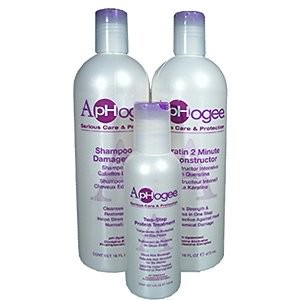4 Ways to Successfully Transition from Heat Damaged Hair without Doing the Big Chop

If you have heat damage chances are you have a decision to make. Do you live with your damaged curls and continue to use heat so that your hair looks uniformed? Do you big chop? Or if you do not want to do any of those things what are your options?
Well you do have one other thing you can consider and that is transitioning. In other words you can allow your original curl pattern to grow out while you slowly remove the damaged ends.
Transitioning requires a bit of an adjustment and a lot more effort when caring for your hair while trying to blend both textures in the healthiest way possible. This post will give you 4 tips on how to successfully transition from heat damaged hair without chopping off all of your hair and starting over.
What is heat damage?
Your hair strand is shaped based on the structure of the keratin bonds in your hair. When these bonds are broken, your once curly hair becomes straight. In most cases the hair can move from straight back to curly again when the bonds are temporarily altered however with heat damage, the changes are permanent.
High heat usage can severely alter the structure of your hair strand making some of them appear stick straight despite what you do to make your hair revert and become curly again.
For some textures the appearance of heat damage might just be looser curls all the way around that is uniformed, for other textures that have severe shrinkage the damage is very noticeable with most of the hair shrinking when wet and straight pieces everywhere as if random pieces of hair were chemically relaxed.
living with heat damage is not an option if your hair is constantly dry and breaking because of it. The strand will be very porous, thin and weak, and you will find it very difficult to maintain moisture in your hair which makes the idea of transitioning almost a must.
How to transition from heat damaged hair
1. Stop using heat
This is probably the most obvious of the tips because the use of heat is probably what got you in this mess in the first place. Eliminate heat from your regimen all together so that your hair can successfully heal and become stronger as you take care of it.
Flat irons*, curling irons*, curling wands* are all a no no when you are transitioning from heat damage.
2. Do protei n treatments
n treatments
You will need to become very familiar with protein treatments because your hair will need to be repaired, and become stronger.
The curls that are not heat damaged may not be as strong as they used to be even though they do not appear straight like some of the other ones. Adding protein deep conditioning* to your regimen strengthens your hair over all.
We would suggest doing a hard protein treatment once a month or once every 2 months and then maintaining your hair with small shots of protein through out the month.
Find a protein treatment that can moisturize and strengthen your hair at the same time so that you do not suffer from protein over load. For example the yogurt treatment we suggested in this post.
3. Wear heatless styles
You might decide to protective style mostly as you transition because you do not want to lose moisture or further damage your curls. There are however some heatless style options you can try as well. Bantu knot outs are one, or flexy rod sets, or even curl formers.
These styles allow you to blend both textures and they keep your hair stretched which is a must to prevent tangling of thin ends.
You can absolutely make the transition successfully by figuring out your signature heat less style as you care for your hair, if it is easier to stick with one thing, then by all means do so so that your hair can flourish.
4. Get regular trims
If you transitioned from relaxed to natural hair chances are you know how often you needed to get a trim to get to your goal.
The more often you trim off the damaged ends the healthier your hair will be. As we mentioned heat damaged ends can be very thin and can cause a ton of tangles which can set you back even further.
You want to ensure that your ends stay sharp and blunt during your transition so cut your hair slowly month to month until all the damage is gone.
Once you have successfully removed all of the ends, your hair should be back to how it was before you had heat damage (in some cases even better).
Transitioning does not have to be a hard process. The most important thing you have to do is build a new regimen and stick to it. The consistency will bring the results you desire, as you remove the damage from your hair. Cleanse, condition, deep condition, trim, repeat.
Follow these tips, and you will have your curls back in no time!

